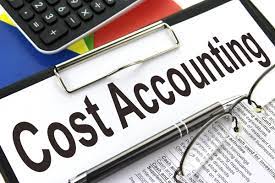In computing the intrinsic value of data as an asset, cost based method is one of the choices that a Data Valuer needs to explore. Current market value if available could be the second option while Net Present Value of future earnings expected from the asset could be a third option.
In Cost based approach, it is necessary to make a distinction on “Cost of Collection of Data” and “Cost of cleaning up data by removing unwanted collateral data”. After this “Data Preparation”, the data would e ready to be used for some purpose. The asset needs to be valued at this stage by computing the cost upto the preparation of data ready for exploitation.
One example is that a company X has a license from Twitter or Linked in to parse its data and extract useful data. In such cases, the cost of data is easily determined by the license fee paid to Twitter or Linked in. Once the gross data is so gathered, the company may use its own filters to reject some data and retain some. This retained data is the data that is useful as raw material for the company. The cost of filtering may be ascertained by the specific software used for the purpose and the manpower cost assigned to the activity. Additionally a share of the fixed costs can also be allocated. This total cost would be the cost of data in this context.
Once data is kept in store for further use, some user department may recall the data and create value added products (eg: a saleable report based on the information). This would be cost of production of the given product.
If the raw data is collected from say the website of the company X where a service is offered and customers register for the service using a web form, the cost of collection would be the cost of hosting the web form and a share of the fixed cost attributable to the maintenance of the website.
In a practical situation, companies may not be able to clearly identify the source of data and cost of its acquisition. However, in the days of data protection, it has become necessary for companies to set up an appropriate organizational structure to identify the sources of collection of data and hence it may be possible to attribute direct cost of collection.
However, this exercise of ascertaining the cost of data belongs to the domain of Cost Accounting and it will be necessary for the company to have the Cost Accountant work closely with the technology department and the DPO to arrive at a reliable cost of data.
Naavi








dear sir,
The way forward for preparation of valuation of a commercial data deliberated in the above article appears to be the right approach and I totally in agreement with the author’s innovative application of costing as the means to achieve the required objective. Until the time the revenues are gets generated from such arranged data, one can add all the expenditures incurred as the basic cost of such proposed digital product and this can find a suitable place in the balance sheet as Capital assets in formation. The other alternative methods to determine the further value of such deliverable data products could be thought of, once the revenues from such saleable data are obtained. Till such time the, we may also have to build the further costs for subsequent years by adding the carrying costs to such original costs arrived as above. This will complete the costing cycle, which is the best practice that could be adopted.
– M G Kodandaram